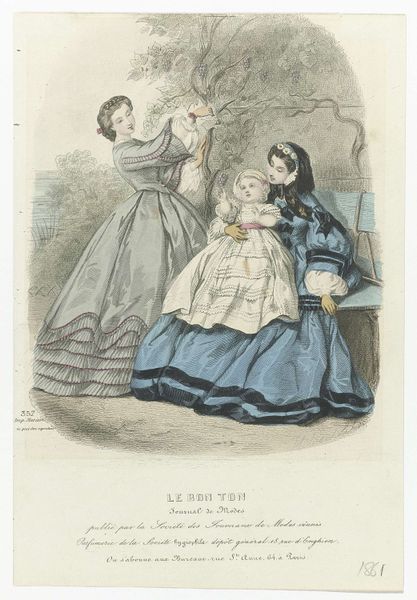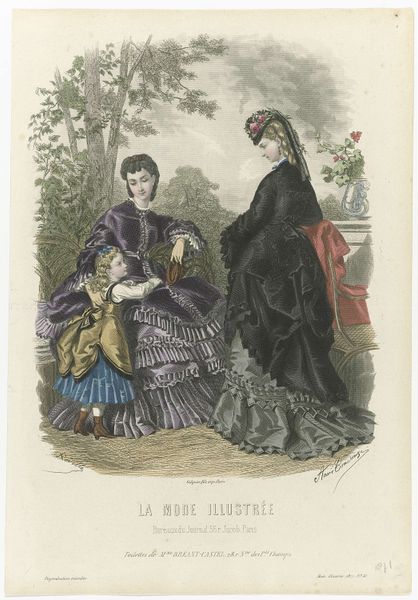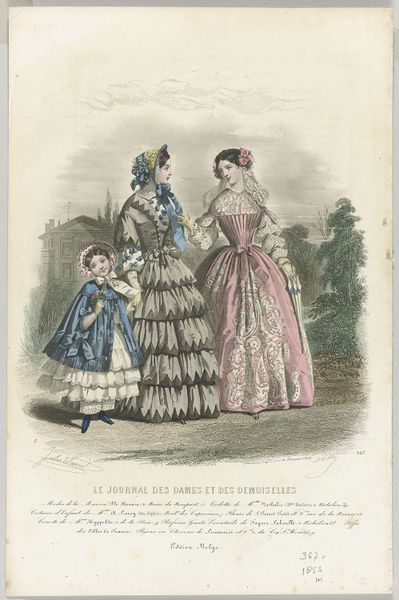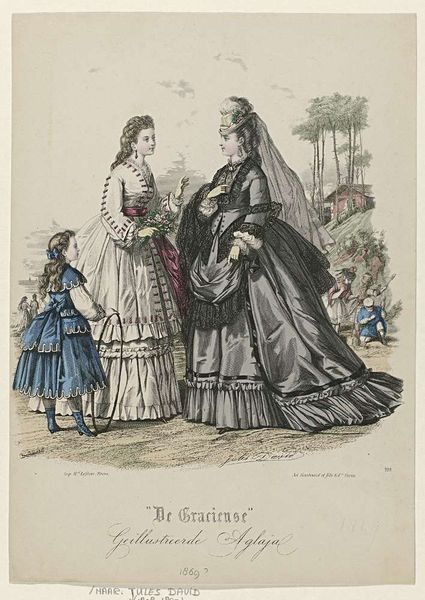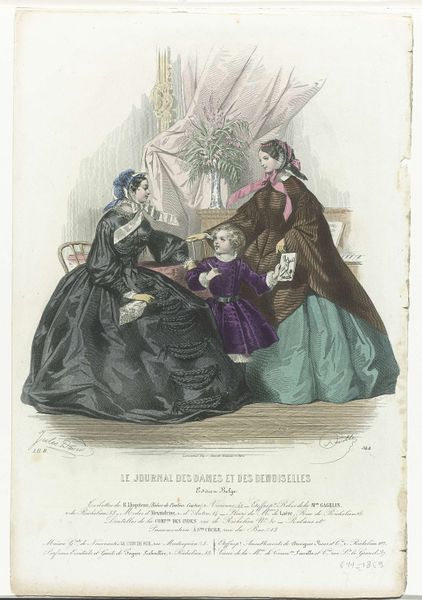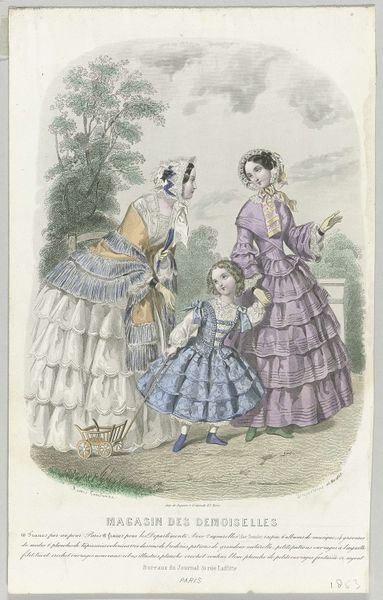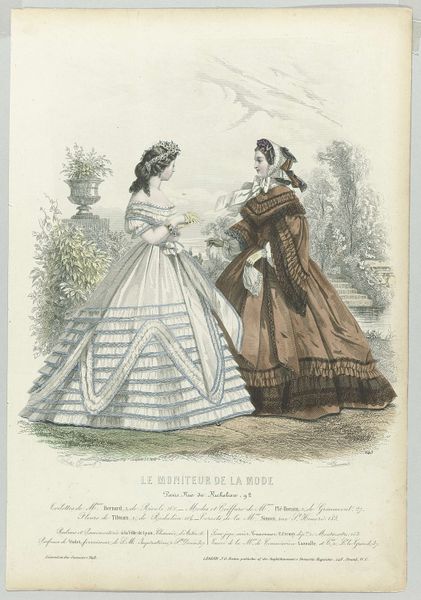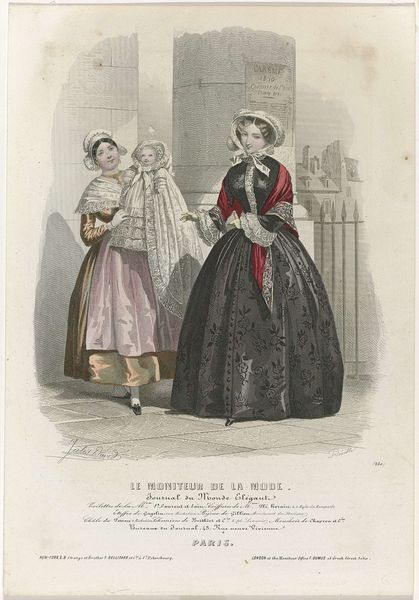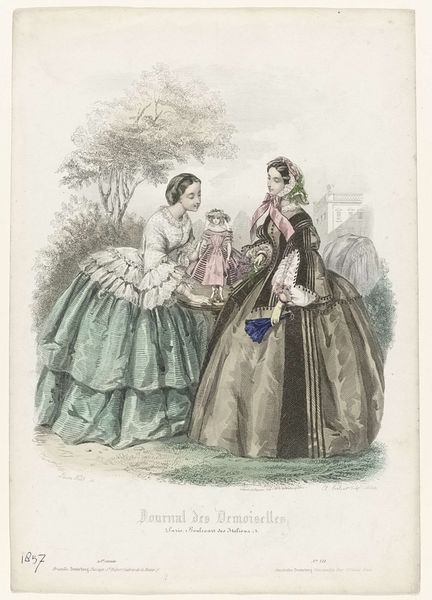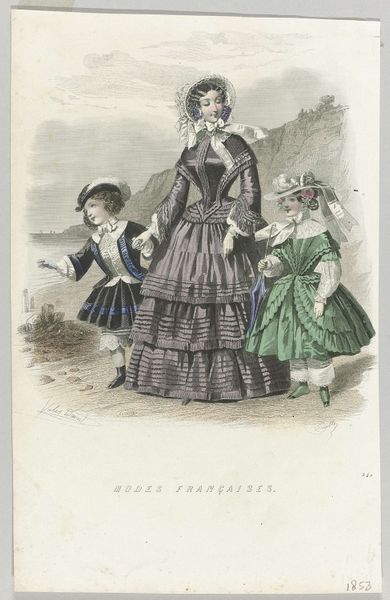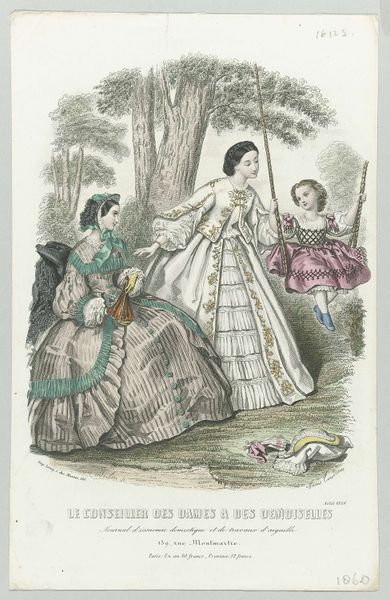
Le Moniteur de la Mode, 1855, No. 442 : Toilettes de M.mes Thierry (...) 1855
0:00
0:00
Dimensions: height 275 mm, width 194 mm
Copyright: Rijks Museum: Open Domain
Editor: Here we have "Le Moniteur de la Mode, 1855, No. 442" by Jean-Baptiste Réville, a lithograph from 1855. I'm struck by the detail in the dresses and the delicate color palette. What stylistic choices jump out at you? Curator: Observe how the artist arranges the figures within the pictorial space. The standing woman leads the eye towards the seated one, whose voluminous skirt establishes a strong horizontal base, almost anchoring the composition. How do you perceive the interplay between the linear details and the overall form? Editor: I notice the detailed patterns in the fabrics and the way the light catches the folds, creating a sense of depth and texture. It’s like the fabric dictates the form of the artwork itself. Curator: Precisely. Note how Réville uses lithography to create different textures and tones. Semiotically, we can also discuss that the cut of these clothes serves to differentiate individuals of social position. Does this observation help you understand the message that the artist seeks to share? Editor: Definitely! I was so caught up in the technical elements, I almost missed it. There's also the distinct separation between the boy on the left and the two women to his right. Curator: It's almost as though he stands outside of a closed boundary or some sort of demarcation; the women do not acknowledge the boy. One offers him something; however, the social difference is present within their forms. We see clear formal distinctions to create separate semiotic zones. Do you notice this too? Editor: Yes! Thinking about how form creates boundaries—literally in this image, in terms of spatial relationship. This changes how I view the image. Curator: Indeed, by carefully examining the formal elements and construction, we uncover levels of complexity in a work, as meaning surfaces by how they are shaped by form.
Comments
No comments
Be the first to comment and join the conversation on the ultimate creative platform.
